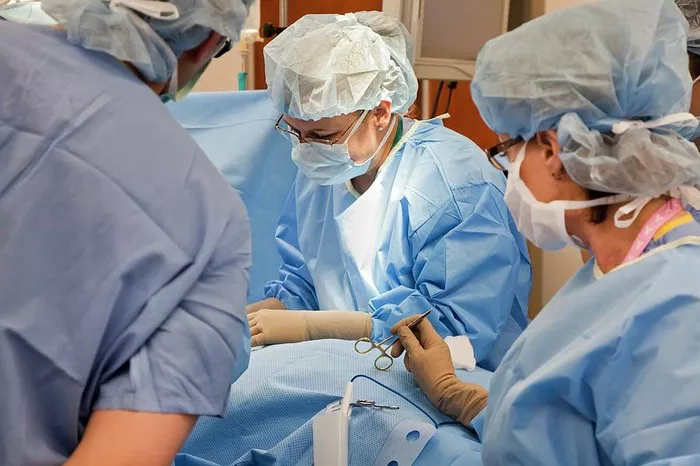Saline breast implants are popular for their natural feel and the fact that, in case of rupture, the body can safely absorb the saline solution. However, like all medical devices, they are not without their risks. Understanding the reasons behind implant rupture can help patients make informed decisions and take preventive measures. Here are six common reasons why saline breast implants might rupture.
1. Normal Wear and Tear
Natural Degradation Over Time
Breast implants, like any synthetic material, undergo wear and tear over time. The outer shell, made of silicone, can weaken as a result of constant movement and the body’s natural processes.
Micro-Tears and Fatigue
Daily activities, such as exercising or even routine movements, can cause micro-tears in the implant shell. These tiny tears can accumulate, leading to structural fatigue and eventual rupture.
Aging of Materials
The materials used in implants, although durable, are not immune to aging. Over time, the silicone shell can become more brittle, increasing the risk of rupture.
2. Trauma or Impact
Physical Injury
Trauma to the chest area, such as from a car accident, a fall, or a sports-related injury, can exert significant force on the implant, causing it to rupture.
Surgical Trauma
Surgical trauma can occur during the initial implantation or any subsequent surgical procedures. Improper handling or excessive manipulation of the implant can weaken the shell, leading to rupture.
Intense Physical Activity
Engaging in intense physical activities that put pressure on the chest can also contribute to implant rupture. Activities such as weightlifting or contact sports can increase the risk.
See Also: 5 Side Effects Of Autologous Fat Breast Enlargement
3. Capsular Contracture
Formation of Scar Tissue
Capsular contracture is a condition where the scar tissue that naturally forms around the implant tightens and squeezes the implant. This can cause discomfort and deformity.
Increased Pressure
The increased pressure from capsular contracture can cause the implant to fold or crease, leading to weakened areas that are more prone to rupture.
Severity of Contracture
The severity of capsular contracture can vary. In severe cases, the intense squeezing and pressure can directly cause the implant to rupture.
4. Defects in Manufacturing
Quality Control Issues
Although rare, defects in the manufacturing process can result in implants with weak spots or imperfections in the shell. These defects can increase the likelihood of rupture.
Batch Variability
Variability in manufacturing batches can also play a role. Some batches may have a higher incidence of defects, leading to an increased risk of rupture for those implants.
Regulatory Oversight
While regulatory bodies enforce strict standards, occasional lapses can occur. It is essential for patients to choose implants from reputable manufacturers with a strong track record of quality control.
5. Overfilling or Underfilling
Improper Filling Volume
Saline implants must be filled to a specific volume range to maintain their integrity and performance. Overfilling or underfilling the implant can compromise the shell.
Increased Stress on Shell
Overfilled implants place excessive stress on the shell, making it more susceptible to rupture. Underfilled implants can develop folds and wrinkles, which are weak points that can lead to rupture.
Surgeon Technique
The technique and experience of the surgeon play a crucial role in ensuring that implants are filled correctly. Inaccurate filling during surgery can increase the risk of rupture.
6. Aging and Health of the Patient
Changes in Body Over Time
As patients age, changes in their body, such as weight fluctuations, hormonal changes, and the natural aging process, can affect the integrity of the implants.
Thinning of Tissue
The thinning of breast tissue over time can reduce the natural support around the implant, increasing the risk of rupture.
Medical Conditions
Certain medical conditions or treatments, such as radiation therapy for breast cancer, can weaken the breast tissue and the implant shell, leading to a higher risk of rupture.
Prevention and Management
Regular Monitoring
Regular check-ups and imaging studies, such as MRI or ultrasound, can help detect early signs of implant weakening or rupture.
Choosing the Right Surgeon
Selecting a qualified and experienced plastic surgeon is crucial. A skilled surgeon can minimize the risk of surgical trauma and ensure proper implant placement and filling.
Being Aware of Symptoms
Patients should be aware of the symptoms of implant rupture, which can include changes in breast size or shape, pain, swelling, and tenderness. Prompt medical attention is essential if rupture is suspected.
Conclusion
Saline breast implants are generally safe and effective, but they are not without risks. Understanding the factors that can lead to rupture can help patients make informed decisions and take proactive steps to minimize these risks. Regular monitoring, choosing the right surgeon, and being vigilant about any changes can significantly reduce the likelihood of implant rupture. By staying informed and proactive, patients can enjoy the benefits of saline breast implants while minimizing potential complications.
Related topics:

